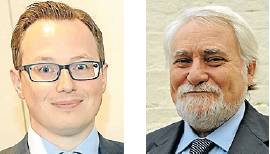Mayors urged to use zoning powers to help fight obesity
WESTERN SYDNEY
Esther Han
Health reporter
Mayors across greater western Sydney are being urged to use council zoning powers to design environments that promote healthy lifestyles to confront the obesity crisis gripping their communities.
The non-profit Western Sydney Leadership Dialogue has released a five-point plan to tackle the region’s obesity epidemic, with two of the points directed at local mayors. It said mayors must ‘‘take ownership of remaking [their] ‘obesogenic’ [local government areas]’’ and ‘‘lead the way to more nutritious, physically active local lifestyles’’.
‘‘This is a sensitive issue that does carry a stigma with it, so a local leader with the ability to communicate well and the understanding of local issues, they can bring the community with them and deliver meaningful outcomes,’’ its executive director Adam Leto said.
In Sydney, the council areas of Camden, Campbelltown and Penrith have the highest rates of obese adults at more than 32 per cent, while the council areas of Ku-ringgai and Willoughby had the lowest rates of about 14 per cent, according to the Health Tracker Atlas.
The report, Western Sydney’s Heavy Issue, urged leaders to use their zoning powers, control over public assets such as bus shelters and ability to run community gardens to encourage healthy eating.
‘‘Equally important is the local government’s role in making it harder – or ‘less easy’ – for their residents to eat badly,’’ it said.
‘‘The dialogue acknowledges the calls from some health advocates that councils be granted planning power over ‘discretionary choice’ food outlets on health grounds.’’
It also urged them to increase green space and encourage residents to exercise.
‘‘Day-to-day decisions over land allocation, street network design, residential density, open space and individual developments can gradually ‘design out’ the built obesogenity,’’ it said.
Professor Thomas Astell-Burt, a population health expert at the University of Wollongong, said that the rate of diabetes in western Sydney was three times higher than in the east.
‘‘There’s so much more we can do to help people stay healthy and out of hospital,’’ he said.
Barry Calvert from Western Sydney Regional Organisation of Councils (WSROC), which represents eight councils, said the ‘‘sprawling’’ nature of the region combined with limited local jobs and public transport did not support active lifestyles.
Cr Calvert, from Hawkesbury City Council, said facilities such as swimming pools were needed, but ‘‘unfortunately, councils [could] no longer attract contributions to build such facilities in new growth areas’’.
Camden mayor Theresa Fedeli said as part of the council’s ‘‘children and families strategy’’ it had held the Sanitarium TRYathlon event, run a healthy-living expo and created youth spaces.
Campbelltown mayor George Brticevic said his council had launched the ‘‘Change 4 Campbelltown’’ campaign in partnership with the South West Sydney Local Health District last year to reduce childhood obesity rates by 5 per cent over 10 years.
